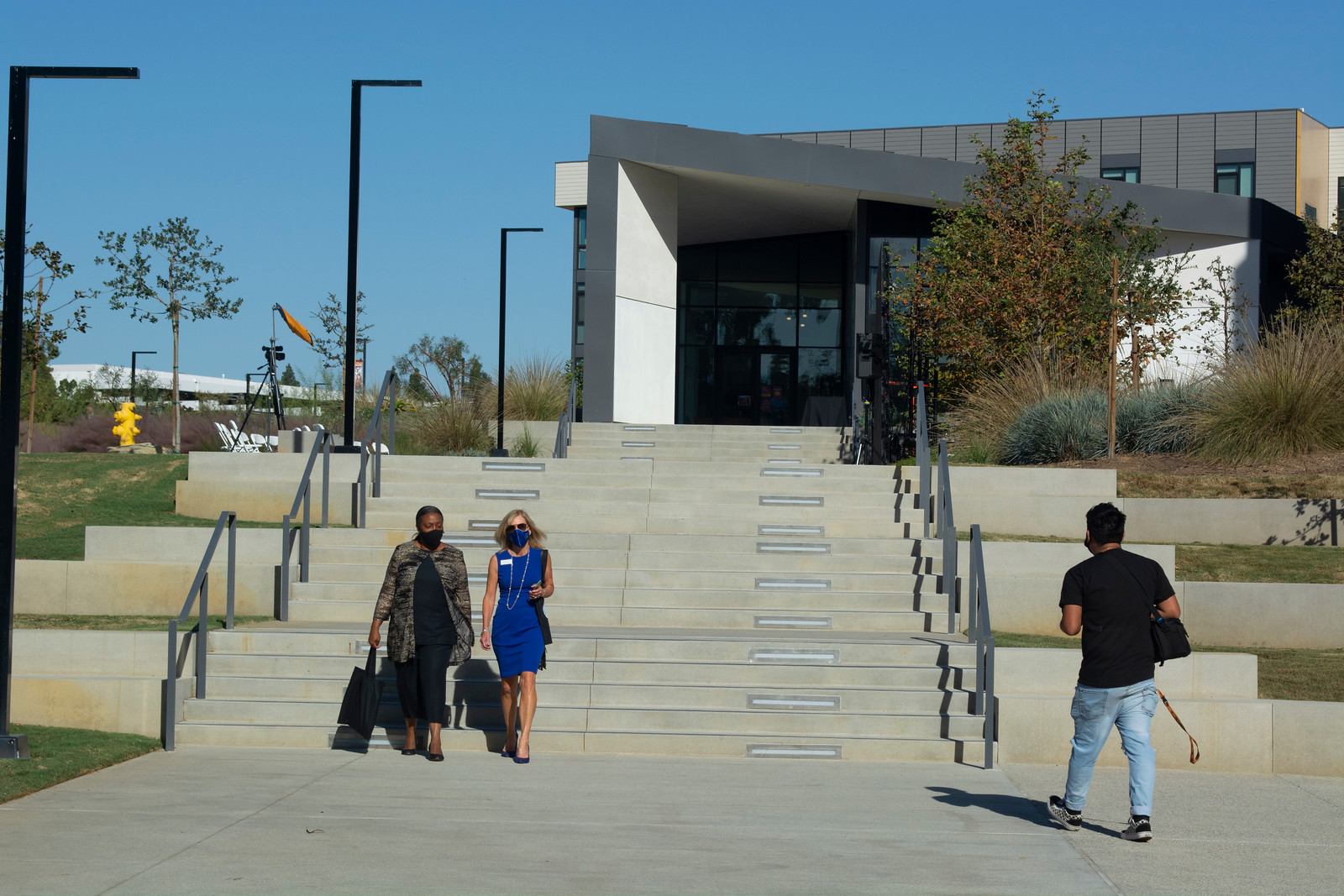By Abla Gorashi, Staff Reporter
The first thing that typically comes to mind when people think of CSUDH is that it’s a commuter school. But when you think about it, once you arrive on campus, it’s really more pedestrian. Students enrolled at Dominguez Hills definitely get their steps in every day, but for some Toros, the route to and from class is full of roadblocks.
Toros who have disabilities that affect their mobility may experience difficulties getting around campus. There aren’t too many accessible pathways on campus, too few wheelchair ramps, and some of the elevators here take forever to move between floors. Cain Library, for example, is often a nightmare for anyone trying to get to the offices and student support centers on the fifth floor. Now imagine having to wait even longer because there’s no space in the elevator for a wheelchair – and what about people using crutches or walkers?
Many students are already rushing to and from class every day, but for students who need wheelchairs or crutches, just getting to the North Lawn outside Loker Student Union can be a challenge. This campus seems to love its stairs, but some stairwells are behind heavy doors.
CSUDH first opened in 1960, and unfortunately, some of the buildings and amenities on campus seem like they haven’t been updated since then. Meanwhile, according to the Chancellor office SD presentation pdf, CSUDH is currently investing millions of dollars into the construction of new state-of-the-art facilities – a wellness center and a dining hall, just to name two – but the buildings most students here use every day could use a bit more than a little TLC.
Ben Toubak, the director of the CSUDH Student disAbility Resource Center, cited a number of amenities needed to improve accessibility on campus – ramps are at the top of that list. Toubak told me the university should also invest in additional training to help faculty and staff better serve the needs of students with disabilities.
You can’t necessarily blame CSUDH for wanting to further develop the campus – it’s all part of a greater initiative to change perceptions about the school. There’s nothing wrong with building for the future, but that shouldn’t come at the expense of the students who call CSUDH home right now. Whether they live on campus or make the commute every day, CSUDH shouldn’t lose sight of ways it could create a richer, more equitable experience for all Toros.

